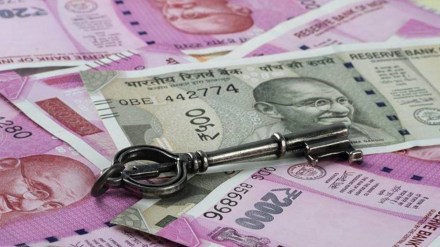Several drawbacks of the government’s flagship Production Linked Incentive (PLI) scheme are being flagged by industry players, as the government is planning a comprehensive review of it, along with all stakeholders on June 27.
The slow uptake of incentives and lack of enough investor interest in at least half a dozen sectors among the 14 covered, have necessitated the review.
The PLI scheme, which started in March 2020 with announcement of incentives for pharma, medical devices and large-scale electronics, was later expanded to other sectors. For all 14 sectors covered by the scheme, outlay for incentives has been kept at Rs 1.97 trillion. The incentive package for each sector runs for five years and as new sectors have been added to it over time the scheme will run till 2028.
Since the start of the scheme, only Rs 2,900 crore of incentives have been disbursed. “Only 2% of the funds have been used and going forward this problem will increase. One reason for the slow start of the scheme is that it is very complicated and to qualify for incentives the investors have to meet many parameters,” founder of Global Trade Research Initiative Ajay Srivastava said.
“The design of the scheme should be simple and there should be as few conditions as possible to make it easy for investors and officials managing it,” he said.
Scheme for each sector is managed by the ministry responsible for the sector and between the government and the investor a layer of Project Implementing Agencies has been placed. The Industrial Finance Corporation of India is handling 10 sectors, Small Industries Development Bank of India two schemes, Metallurgical and Engineering Consultants and IREDA and Solar Energy Corporation of India are managing one scheme each.
This adds to the complexity and because of the long list of conditions officials would be vary of signing the grant of incentives, another analyst who did not wish to be named said.
The payment of a claim of `900 crore of incentives by Korean mobile manufacturer Samsung has got stuck in the maze of rules of PLI, according to reports. The company’s representatives have been quoted in the media reports saying that they are in the advanced stage of discussions with the government for the redressal of the issue.
Of the 14 sectors covered by PLI, activity has been visible only in six sectors – large scale electronics, telecom, pharmaceuticals, food processing, white goods, and auto and auto components. Most visible success story of PLI is mobile phone manufacturing and pharma.
The PLI may not support immediate recovery of capital expenditure but for the long-term we are positive on it, Prashant Tarwadi, director at India Ratings, said.
The government may not be able to utilise the entire amount of incentives under PLI during the time period of the scheme. “The scheme may continue in some form or the other beyond its stated term,” Tarwadi said.
The government has been running incentive schemes to give a leg up to manufacturing since 2012-13 and must have spent close to `1 trillion on them without making a lasting impact. PLI is the latest of such incentive models.
The analyst who did not wish to be named said that sectors under PLI that are yet to take-off should be taken out of it and new sectors should be brought in that are strategic in nature. “PLI should never have been for finished products but for components and parts,” he said.
“The developed world like the EU, UK and US are moving towards the Carbon Border Adjustment Mechanism or carbon tax that will put punitive tariffs on India’s exports. PLI funds should be used to handhold the industry to shift to low carbon manufacturing,” Srivastava said.
He said PLI should also be shifted towards building of components for high-tech items like mobile phones and rechargeable batteries. By assembling components participation in value chains would remain low,” Srivastava said.
The assembling of mobile phones and capturing a low-end of value chain has both its critics, including the former Reserve Bank of India governor Raghuram Rakan, but supporters as well.
“We have to start somewhere, but not at the top of the value chain. At least we are getting 5% of the value of mobile phones, earlier we were getting zero,” former Vice Chancellor at Indian Institute of Foreign Trade Manoj Pant said.
He pointed out that when China entered electronics manufacturing in 2008 it also started with assembling. “It started with 6% of the value chain in electronics and has now taken its share to more than 40%.”.
The government says that value addition in mobile phones has touched 20% as manufacturing of components like printed circuit board assembly (PCBA), camera modules, chargers and battery localised. It also said that green shoots are visible in component making with the entry of Tata group.
“How fast we scale up from here depends on us,” Pant said, adding that assembly has another advantage of providing employment to large numbers of semi-skilled persons.
He said that most of the world trade happens in value chains and for India to emerge as a trading power then capturing some of those supply chains in electronics that are already shifting would be the key.
According to government data exports of mobile phones in 2022-23 touched Rs 90,000 crore from almost nil in 2014-15. Imports of mobile phones have also dropped to 5% from 78% in 2014-15.
